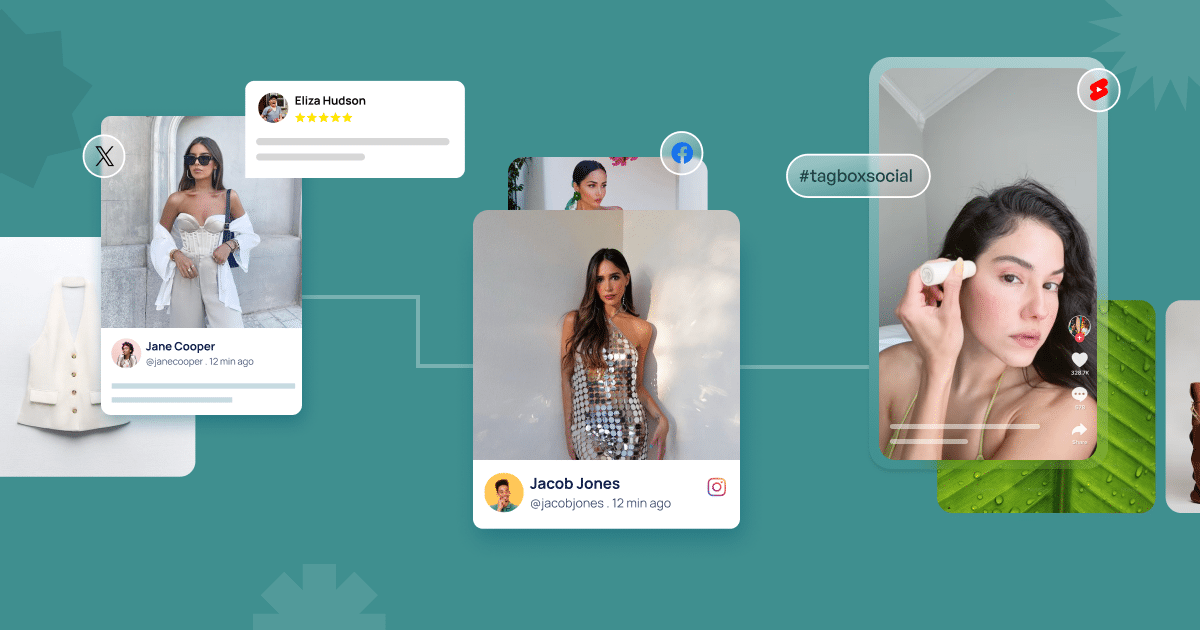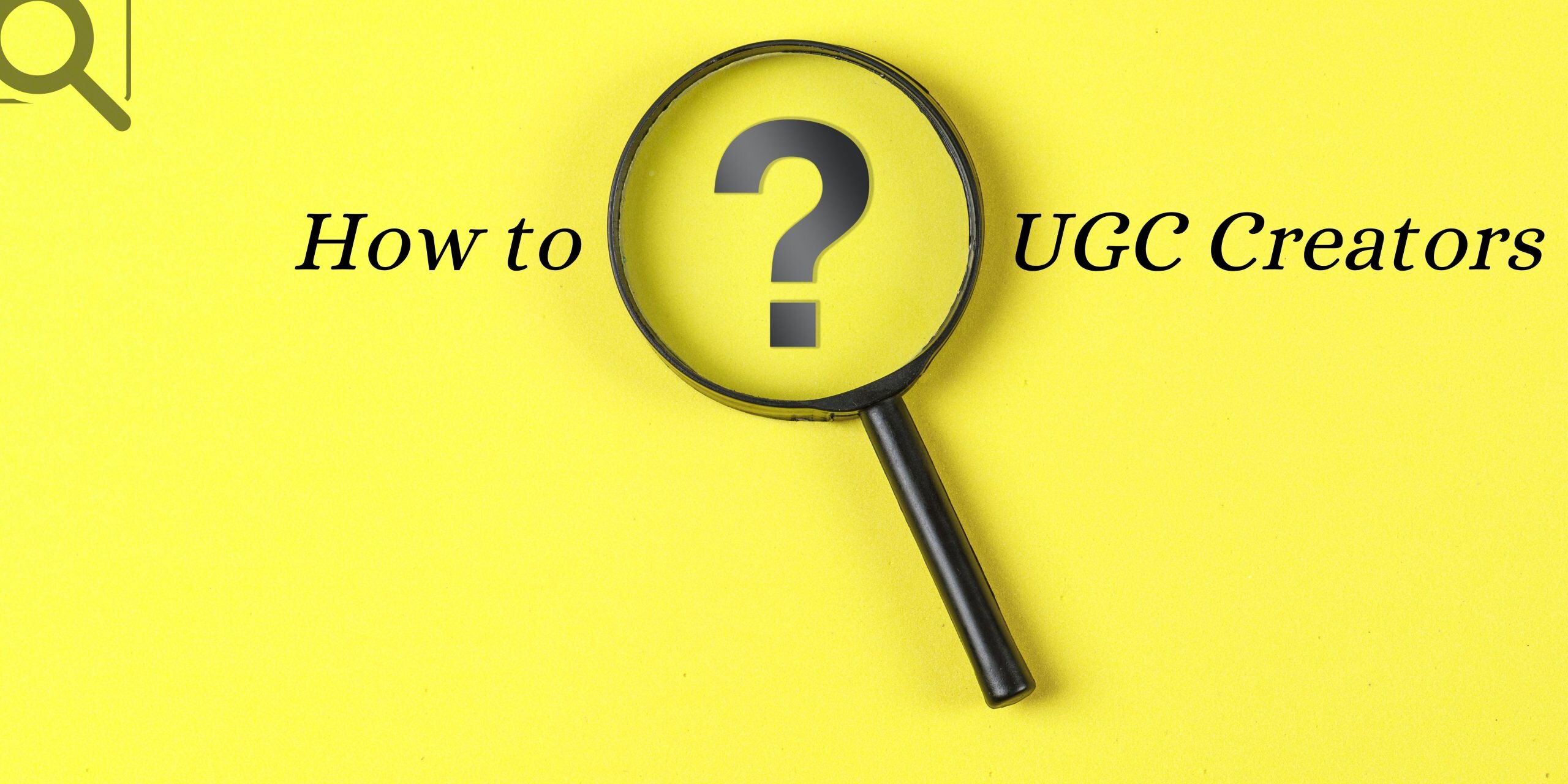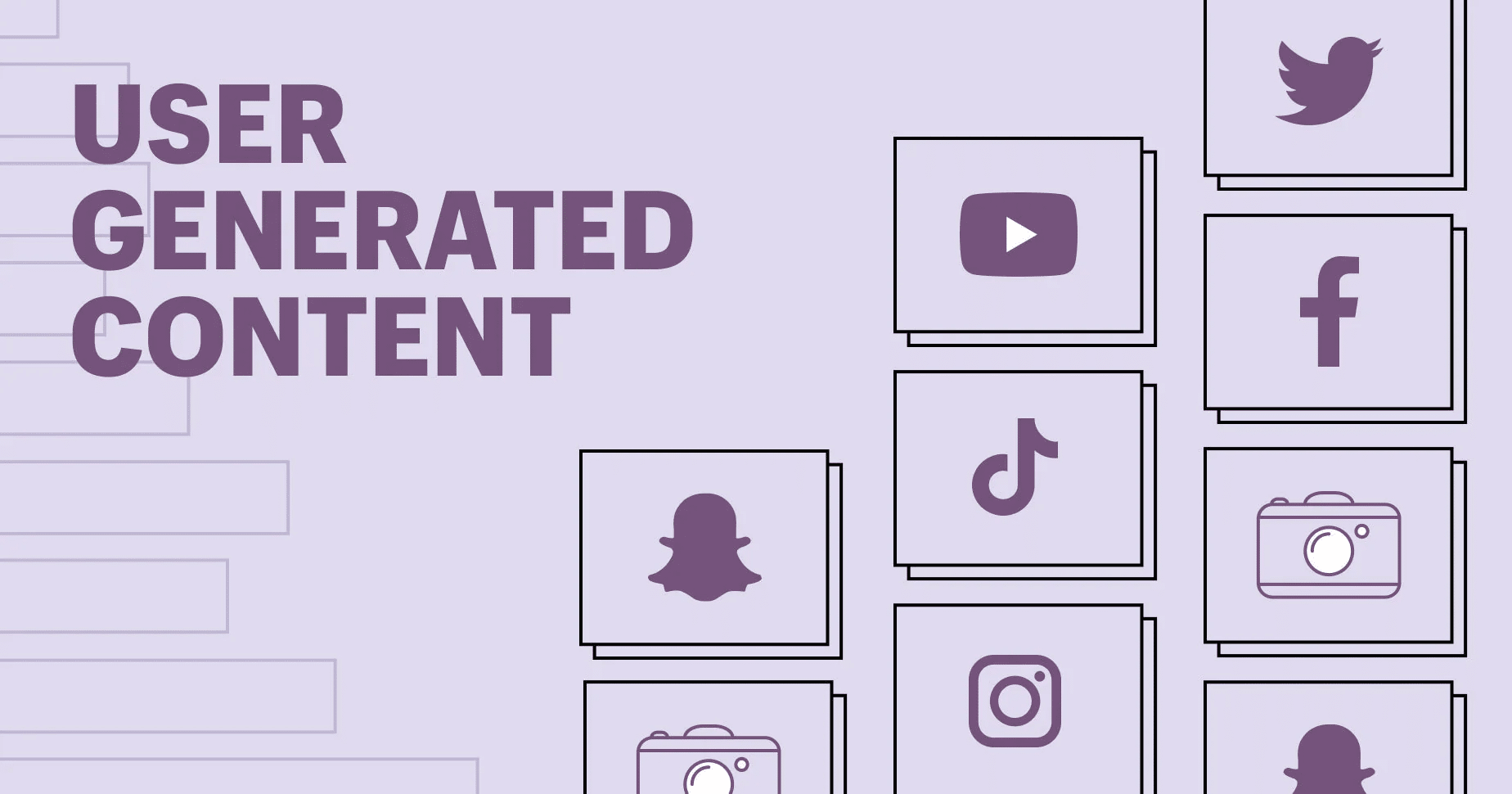User-generated content(UGC) has revolutionized digital marketing, shifting power from brands to consumers. It’s the authentic voice of your audience, encompassing reviews, photos, videos, and social media posts. Trust and authenticity are paramount in today’s landscape, and UGC delivers both. Unlike polished advertisements, it showcases real experiences, building credibility and fostering community. By leveraging UGC, businesses can amplify brand reach, boost engagement, and create lasting customer relationships. It’s a cost-effective UGC strategy that taps into the creativity and enthusiasm of your users, making them integral to your brand’s narrative.
What is User Generated Content?
User-generated content (UGC) refers to any form of content, such as images, videos, text, or audio created by users of a product or service rather than the brand itself. Essentially, its content is made by everyday people.
Types of User Generated Content
User-generated content (UGC) comes in diverse formats, reflecting how people express themselves online. Here’s a breakdown of the key types:
- Visual UGC:
- Photos: Images shared on platforms like Instagram, Facebook, and other social media, often showcasing products or experiences.
- Videos: Videos posted on platforms like YouTube, TikTok, and Instagram Reels, ranging from product reviews to personal vlogs.
- Text-based UGC:
- Reviews and Testimonials: Written feedback on products or services on e-commerce sites, review platforms, and social media.
- Comments: Responses to blog posts, social media updates, and online forum discussions.
- Social Media Posts: Updates, tweets, and other text-based content shared on social networks.
- Blog posts and forum discussions: longer form written content.
- Audio UGC:
- Podcasts: User-created audio content on a variety of topics.
- Voice Notes: Audio messages are shared on UGC apps or social media.
- Social Media UGC:
- This broad category can include any above, explicitly referring to content created and shared on social media platforms. Examples include:
- Instagram stories
- TikTok videos
- Facebook posts
- X (formerly Twitter) posts.
- This broad category can include any above, explicitly referring to content created and shared on social media platforms. Examples include:
Importance of User-generated Content
User-generated content (UGC) is essential in today’s digital landscape, particularly for brands and businesses. Here’s a breakdown of its key importance:
- Building Trust and Authenticity:
- In a world saturated with advertisements, consumers crave genuine experiences. UGC provides that, as it comes from real people, not just marketing departments. This builds trust and credibility.
- In a world saturated with advertisements, consumers crave genuine experiences. UGC provides that, as it comes from real people, not just marketing departments. This builds trust and credibility.
- Enhancing Social Proof:
- Seeing others use and enjoy a product or service is powerful social proof. Potential customers are more likely to purchase if they see positive experiences from their peers.
- Seeing others use and enjoy a product or service is powerful social proof. Potential customers are more likely to purchase if they see positive experiences from their peers.
- Increasing Engagement:
- UGC encourages interaction and participation. When brands feature user content, they foster a sense of community and encourage others to share their experiences.
- UGC encourages interaction and participation. When brands feature user content, they foster a sense of community and encourage others to share their experiences.
- Cost-Effective Marketing:
- UGC can be a cost-effective way to generate content. Brands can leverage their customers ‘ creativity instead of investing heavily in professional productions.
- UGC can be a cost-effective way to generate content. Brands can leverage their customers ‘ creativity instead of investing heavily in professional productions.
- Expanding Reach:
- When users share content, they expose the brand to their networks, organically expanding the brand’s reach.
- When users share content, they expose the brand to their networks, organically expanding the brand’s reach.
- Improving SEO:
- UGC can improve search engine optimization (SEO) by increasing the relevant content associated with a brand.
- UGC can improve search engine optimization (SEO) by increasing the relevant content associated with a brand.
- Providing Valuable Insights:
- UGC provides brands with valuable insights into how customers use their products and services and what they think about them.
How do Brands Use User Generated Content(UGC)?
Brands utilize user-generated content (UGC) in many ways to enhance their UGC marketing efforts, primarily focusing on building trust and authenticity. Here’s a breakdown of how they do it:
1. Social Proof and Trust Building:
- Reviews and Testimonials:
- Brands display UGC reviews on product pages and websites to provide social proof, influencing potential buyers.
- Visual Content:
- They share user-generated photos and videos on social media and websites, showcasing real customers using their products. This adds a layer of authenticity that traditional advertising often lacks.
2. Enhancing Marketing Campaigns:
- Social Media Campaigns:
- Brands run UGC campaigns, contests, and challenges to encourage users to create and share content related to their products.
- They repost and feature user content on their official social media accounts, increasing engagement.
- Advertising:
- UGC is incorporated into paid advertising campaigns, including social media and display UGC ads, to increase credibility and engagement.
3. Website and E-commerce Integration:
- Product Pages:
- User-generated photos and videos are displayed on product pages, providing potential customers with real-life UGC examples of how the product is used.
- Dedicated Galleries:
- Brands create dedicated sections on their websites to showcase curated UGC, creating a sense of community.
4. Customer Engagement and Community Building:
- Encouraging Interaction:
- Brands actively engage with user-generated content by liking, commenting, and sharing, fostering a sense of community.
- Building Brand Loyalty:
- Brand featuring user content makes customers feel valued, strengthening their relationship and encouraging brand advocacy.
Key Benefits for Brands:
- Increased Authenticity: UGC provides genuine customer experiences, building trust and credibility.
- Cost-Effectiveness: UGC reduces the need for expensive, professionally produced content.
- Enhanced Engagement: UGC encourages interaction and participation, increasing customer engagement.
- Broader Reach: User-generated content can reach a wider audience through organic sharing on social media.
Where to Find UGC?
Finding user-generated content (UGC) involves tapping into various UGC platforms and monitoring user activity. Here’s a breakdown of where you can find UGC:
1. Social Media Platforms:
- Instagram:
- Search for branded hashtags, location tags, and mentions of your brand.
- Monitor Instagram Stories and Reels for user-generated videos and photos.
- TikTok:
- Search for branded hashtags and challenges related to your brand.
- Explore user-generated videos showcasing your products or services.
- X (formerly Twitter):
- Monitor mentions of your brand and related hashtags.
- Search for user tweets and photos.
- Facebook:
- Check your brand’s Facebook page for user posts, comments, and reviews.
- Search for relevant groups and discussions.
- YouTube:
- Search for user-generated videos featuring your products or services, such as reviews and unboxings.
- Pinterest:
- Search for pins that feature your products.
2. Review and Rating Platforms:
- Google Reviews:
- Monitor customer reviews and ratings on your Google Business Profile.
- Yelp:
- Check for user reviews and photos of your business.
- Amazon:
- Explore customer reviews and photos on product pages.
- Industry-Specific Review Sites:
- Check review sites relevant to your industry.
3. Your Own Website and E-commerce Platform:
- Product Pages:
- Display customer reviews, photos, and videos on product pages.
- Blog Comments:
- Monitor comments on your blog posts for user feedback and insights.
- Forums and Communities:
- If you have a brand forum, monitor the user-created content there.
4. Hashtag Monitoring Tools:
- Use social media listening tools to track branded hashtags and mentions across various platforms. These tools can help you identify and curate UGC efficiently.
Tips for Finding UGC:
- Use relevant keywords and hashtags: Be specific in your searches to find the most relevant content.
- Set up alerts: Use social media monitoring tools to receive notifications when your brand is mentioned.
- Engage with your audience: Encourage customers to share their experiences by asking for reviews and photos.
- Run contests and challenges: Incentivize users to create and share UGC.
- Monitor your brand’s social media inboxes: Users may send content directly to your brand.
How to Get User-generated Content(UGC)?
Getting high-quality user-generated content (UGC) requires a proactive and engaging approach. Here’s a breakdown of strategies to encourage your audience to create and share content:
1. Run Contests and Giveaways:
- Incentivize creation: Offer prizes or rewards for users who create and share content using a specific hashtag or following certain guidelines.
- Set clear guidelines: Define the type of content you’re looking for and provide clear instructions.
2. Create Branded Hashtags:
- Promote your hashtag: Encourage users to use your branded hashtag when sharing content related to your brand.
- Monitor and feature: Regularly monitor the hashtag and feature the best submissions on your official accounts.
3. Ask for Reviews and Testimonials:
- Post-purchase requests: Send automated emails or messages asking customers to leave reviews after purchasing.
- In-person requests: Encourage customers to leave reviews or share photos while in your store or using your service.
- Simplify the process: Make it easy for customers to leave reviews by providing direct links or QR codes.
4. Launch Social Media Challenges:
- Create engaging challenges: Design fun, creative, and relevant challenges to your brand.
- Use trending formats: Leverage popular UGC trends and formats to increase participation.
- Showcase participants: Highlight the best submissions on your social media accounts.
5. Encourage Photo and Video Sharing:
- Create visually appealing spaces: Design your store or product packaging to be “Instagrammable” and encourage customers to take photos.
- Run photo contests: Host contests that require users to share photos or videos of themselves using your products.
- Use QR codes: Place QR codes on your products or your store that link to a page where customers can easily upload photos or videos.
6. Engage with Your Audience:
- Respond to comments and messages: Respond to your customers’ comments and messages to show that you value their feedback.
- Feature user content: Regularly repost and feature user-generated content on your official accounts.
- Build a community: Create online forums or groups where users can connect and share their experiences.
7. Provide Excellent Customer Service:
- Satisfied customers are more likely to create positive UGC.
- Address customer concerns promptly and effectively.
8. Leverage Influencers:
- Partner with influencers to create and share content that showcases your brand.
- Encourage influencers to ask their followers to create and share their content.
9. Make it easy:
- The easier you make it for customers to submit content, the more likely they will do so.
UGC Success Stories: Case Studies
1. Apple’s #ShotOniPhone Campaign
Apple leveraged UGC by encouraging users to share stunning photos taken with iPhones, which they featured in advertisements. This strategy positioned Apple’s cameras as top-tier and generated high-quality visual content from real users. The campaign significantly increased Apple’s brand engagement and credibility.
2. Nike’s YouTube UGC Strategy
Nike features real athletes and fitness enthusiasts sharing their experiences, making their content more relatable. Nike taps into authenticity and aspirational storytelling by incorporating UGC into marketing campaigns. This strategy has helped Nike sustain its brand dominance and connect deeply with its audience.
2. Airbnb’s Customer Reviews & Stories
Airbnb uses genuine traveler reviews and UGC images to build trust and authenticity in their listings. Showcasing actual experiences helps convince potential customers of a property’s reliability. The brand’s emphasis on UGC has contributed to its global success and credibility.
Best Practices for Using UGC
- Ask for Permission Before Sharing – Always get consent before using a customer’s content to ensure compliance with copyright laws and maintain trust.
- Ensure High-Quality Content – Encourage visually appealing and engaging content that aligns with your brand’s aesthetic.
- Respond to UGC Creators – Acknowledge and engage with users who create content for you to foster a deeper connection.
- Use UGC Tools & AI for Management – Platforms like Tagshop, Yotpo, and Bazaarvoice help brands collect, moderate, and showcase UGC effectively.
Measure UGC Performance – Track engagement, conversion rates, and reach to refine your strategy. Analyze metrics like impressions, shares, and CTR to evaluate UGC effectiveness.
Future of UGC in 2025 & Beyond
1. AI-Generated UGC
AI tools are helping brands analyze and personalize UGC more efficiently. AI content creation can curate the most engaging content, ensuring brands showcase high-performing AI UGC.
2. UGC in the Metaverse & AR
Brands like IKEA and Snapchat use augmented reality (AR) to enhance user engagement. AR-powered UGC allows customers to visualize products before purchasing, increasing confidence in buying decisions.
3. Shoppable UGC & Social Commerce
Instagram Shopping and TikTok Shop are integrating UGC to drive direct sales. Allowing users to shop directly from UGC posts reduces friction in the buying process and enhances conversion rates.
Conclusion:
User-Generated Content (UGC) has irrevocably transformed the digital landscape, shifting the power dynamic from brands to consumers. Its authenticity, relatability, and cost-effectiveness make it an indispensable tool for modern marketing. By fostering genuine connections, building trust, and driving engagement, UGC enables brands to tap into the collective voice of their audience. Embracing UGC means recognizing the value of customer experiences and leveraging them to create compelling narratives that resonate deeply. In a world saturated with polished advertising, UGC stands out as a beacon of genuine connection, proving that the users themselves often tell the most powerful stories. As technology continues to evolve, the importance of UGC will only grow, solidifying its place as a cornerstone of successful marketing strategies.






